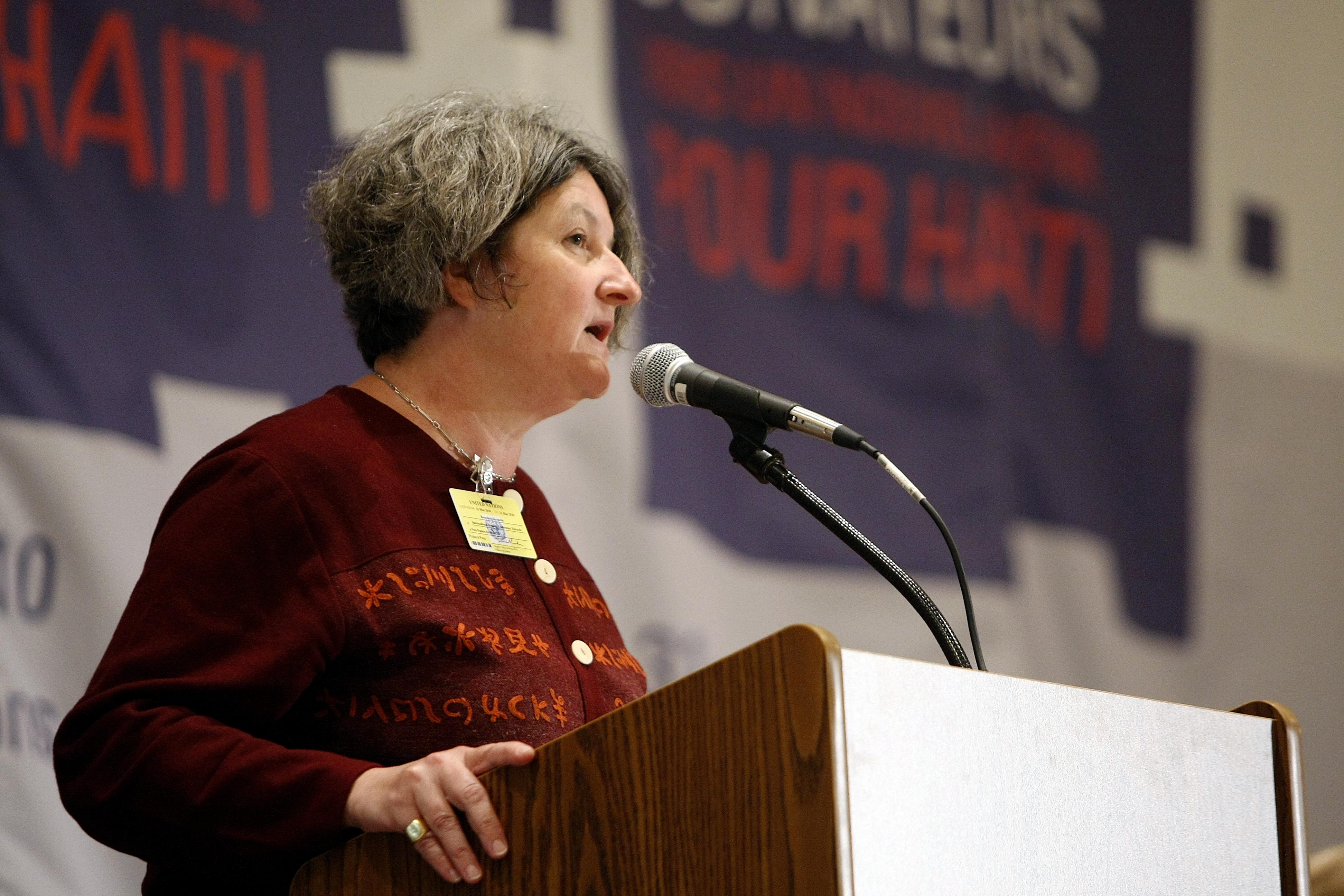An Analysis of Chapter Thirteen of the Global Study: Financing the WPS Agenda
By Nela Abey
Bénédicte Hermelin, Director of non-governmental organisation (NGO) GRET and a representative of European NGOs working in Haiti, addresses the ministerial "International Donors' Conference towards a New Future for Haiti" (Photo: UN Photo/Paulo Filgueiras)
Chapter thirteen of the Global Study on the implementation of UNSCR 1325 (2000) emphasises that the failure to allocate funding is the fundamental obstacle in implementing the Women, Peace and Security (WPS) Agenda and subsequent commitments. While development assistance is increasing, only a small proportion addresses women’s specific needs.
Conflict-oriented funding -- such as for peacebuilding, conflict prevention and resolution, and security system management reform -- is limited and has an even more limited percentage targeting gender equality as a principal objective. Furthermore, despite the crucial contribution of women’s organisations to conflict resolution and peacebuilding, women civil society remains substantially underfunded.
Facts and Figures
In 2012-2013, only 2 percent of aid to peace and security interventions in fragile states and economies targeted gender equality as a principal objective (Global Study 2015, 373);
The total peacekeeping funding for the fiscal year 2014/15 amounted to USD 8.47 billion; these large volumes remain unmarked for gender-focus and therefore unaccounted for in gender-focused aid monitoring systems (Global Study 2015, 379);
Lack of resources ranked highest among the barriers encountered by civil society organisations; 48 percent of respondents reported never having received core funding (Global Study 2015, 382);
UNDP allocated only 4.2 percent of funds to conflict and post conflict countries in 2014 to work targeting gender equality as a principle objective, a percentage largely unchanged since 2011 (Global Study 2015, 383).
Recommendations
The UN should accelerate efforts to attain and then surpass the Secretary-General’s 15 per cent ‘gender marker’ for financing to peacebuilding approaches that promote gender equality; donor States and groups should also adopt the UN’s 15 per cent target within their own aid flows with this percentage being the first, not final, target (Global Study 2015, 386);
Member States, the UN and civil society should increase predictable, accessible and flexible funding for women’s civil society organisations working on peace and security at all levels, including through dedicated financing instruments such as the new Global Acceleration Instrument on Women, Peace and Security and Humanitarian Action (Global Study 2015, 386);
Member States, the UN and civil society should undertake participatory gender and conflict risk analysis (including vulnerability analysis) to inform the design, costing and implementation of all interventions in conflict-affected contexts. (Global Study 2015, 386).
Member States, the UN and civil society should establish systems across all financing actors to promote transparency and accountability, by tracking whether financial allocations further gender equality in a fully compatible manner,including in peace, security and emergency contexts (Global Study 2015, 386);
For more information, see UN Women’s Global Study Factsheets or the entire Global Study on Women, Peace and Security.

